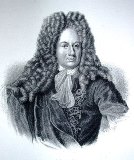Constant (speed of light)


The unit meter (m) is defined by fixing the speed of light c in vacuum to be equal to 299,792,458 m/s, where second is defined by the atomic clock.
History
In 1676, the Danish astronomer Ole Christensen Rømer (1644 – 1710) was the first to measure the speed of light. The result 225,000 km/s was about 25% too small.
The Prussian physicist Albert Abraham Michelson (1852 – 1931) used an interferometer and came to the - for those days - remarkable conclusion that the speed of light in vacuum was the same in all directions, namely 299,774±11 km/s. This formed the basis for the theory of relativity of the German physicist Albert Einstein (1879 – 1955).
Related concepts
Last modified:07 April 2024 7.21 p.m.
View this page in: Nederlands
